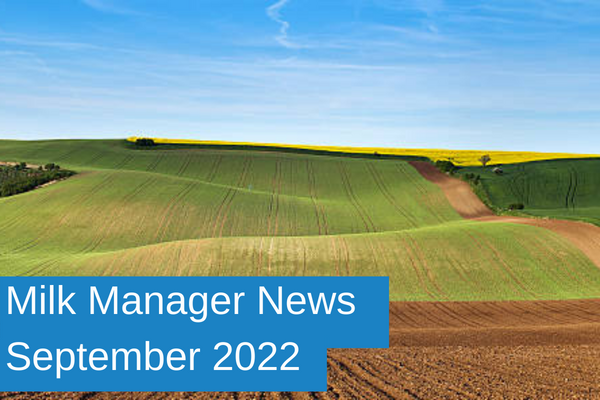Milk Manager News September 2022 – Understanding Soil Carbon Content
13 September 2022As part of the first phase of the Preparing for Sustainable Farming Programme, farmers can receive funding for soil sampling and analysis, as long as they have carried out a carbon audit in the last three years from the 1st of January in the year of sampling that aligns to PAS 2050 standards. Funding for soil sampling is available on up to 1/5th of Region 1 land and must include analysis on pH, phosphorus, potassium and carbon. Soil carbon content and management practices to increase soil carbon are vitally important and can greatly contribute towards lowering a farm’s carbon footprint. Therefore, it is important to understand what affects soil carbon and what can be done to increase these stores.
The carbon content of a soil is closely related to its organic matter content. Therefore, building soil organic matter will help build soil carbon stocks. Soil organic matter refers to living (or previously living) materials within or added to soil. It includes plant roots that develop over the growing season, incorporated crop stubble and added slurries and manures. The organic matter content contains not only organic carbon, but also other elements such as hydrogen, nitrogen and oxygen, which are also part of organic compounds.
In the UK, the soil carbon content typically ranges from between 80 to 120T/ha to 30cm depth.
The carbon content of a soil can be influenced by many factors, the main ones being soil type and climate. For example, clay soils are very good at storing (sequestering) carbon, whereas sandy soils are relatively poor. Changes in the management of land will affect whether the soil carbon stocks are increased, decreased or maintained.
Management factors play a huge part – the longer the soil has had perennial cover, the better its carbon stocks will be. Therefore, grassland generally tends to have higher carbon stocks than arable land as it is tilled (disturbed) less. There is only so much carbon that soils can sequester regardless of how well it is managed. All soils will have a maximum carbon threshold.
Factors that will increase soil carbon content include:
- Having appropriate stocking rates within carrying capacity.
- More productive grass species and legumes.
- Adding manure, fertiliser or biochar (minus N2O cost of fertiliser).
- Land use changes (e.g., changing from arable to grassland or grassland to woodland).
- Reduction in cultivation intensity.
- Use of cover crops /perennial crops in rotation (grass).
Even though farms with a higher stocking rate may have a higher technical efficiency, research shows that soil carbon sequestration on grassland is reduced with higher stocking densities. However, the detrimental effect of high stocking rates on soil carbon can be offset by good grassland management and rotational grazing practices.
Mechanical cultivation has the biggest impact on the soil carbon content. Cultivation enables oxidation, promoting the fast metabolism of aerobic microorganisms, which results in CO2 being released by their respiration. It is estimated that cultivated soils can lose in the region of 3T of soil carbon/ha/year. Soil carbon loss from arable land which is under continual cultivation can be decreased by reducing the frequency, depth and intensity of cultivations.
For more information on managing soil health and carbon stocks see the following resources:
https://www.fas.scot/crops-soils/soils/
https://www.farmingforabetterclimate.org/improving-farm-profitability/soils-fertilisers-and-manures/improving-soil-quality/
lorna.macpherson@sac.co.uk; 07760 990901
Sign up to the FAS newsletter
Receive updates on news, events and publications from Scotland’s Farm Advisory Service

